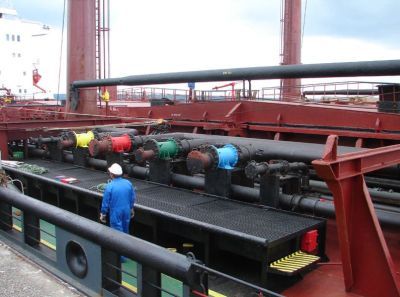
A surplus of available tankers for shipping gasoline to the U.S. from northwestern Europe expanded for the third straight week, as demand for the auto fuel collapsed, a survey showed.
Thirty-three ships, the most since July 6, were yet to be assigned cargoes and available for hire until Sept. 21, according to the median in a Bloomberg News survey of four shipbrokers, one ship owner and two traders today. Ten vessels are hired to load gasoline, with another 10 bookings yet to come, the data show.
“U.S. product imports have fallen dramatically, down 29 percent in the third-quarter 2011 compared to third-quarter 2010,” Martin Korsvold, an analyst at Pareto Securities AS in Oslo, wrote in an e-mail. “The driving season is over and U.S. gasoline demand is 2 to 3 percent weaker than the same period last year.”
U.S. gasoline demand tends to peak during summer’s so- called driving season, extending from Memorial Day weekend at the end of May to Labor Day in the first week of September.
Charterers will hire 20 medium-range tankers to transport 6.29 million barrels of gasoline across the Atlantic Ocean over the next two weeks, according to the survey’s median estimate. That’s three more total bookings than last week, when nine bookings were made and eight more were expected. The 449,000 barrels-a-day rate is 53 percent of the 853,000 barrels the U.S. imported last year, according to the Energy Department.
Daily rental income for tankers carrying gasoline across the Atlantic Ocean fell 1.8 percent to $2,632, according to the Baltic Exchange in London today. That’s the 11th straight day of declines, and the lowest level since Nov. 10, 2010.
Ship Fuel
The price of ship fuel, or bunkers, declined 0.8 percent to $649.60 a metric ton, data compiled by Bloomberg from 25 ports worldwide showed. That’s up 28 percent from Jan. 3.
The survey is based on so-called single-voyage, or spot, charters and excludes loadings under longer-term contracts. It assumes shipments to the U.S. East Coast from northwestern Europe. Each tanker would normally haul about 37,000 tons of cargo, or 315,000 barrels.
Charter rates on the route fell 1.1 percent to 128.13 Worldscale points, according to the exchange. That’s a decline of 3.3 percent from Jan. 4. The points are a percentage of a nominal rate, or flat rate, for more than 320,000 specific routes. Flat rates for every voyage, quoted in U.S. dollars a ton, are revised annually by the Worldscale Association in London to reflect changing fuel costs, port tariffs and exchange rates.
By Rob Sheridan(Bloomberg)
We use cookies to improve your experience. By continuing to use our site, you accept our Cookies, Privacy Policy,Terms and Conditions. Close X